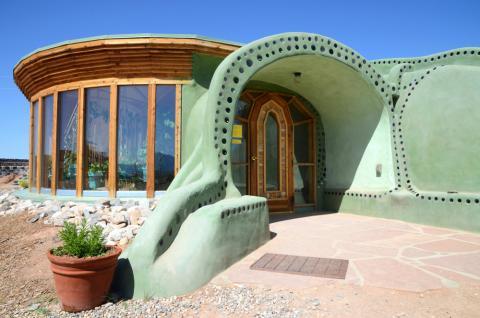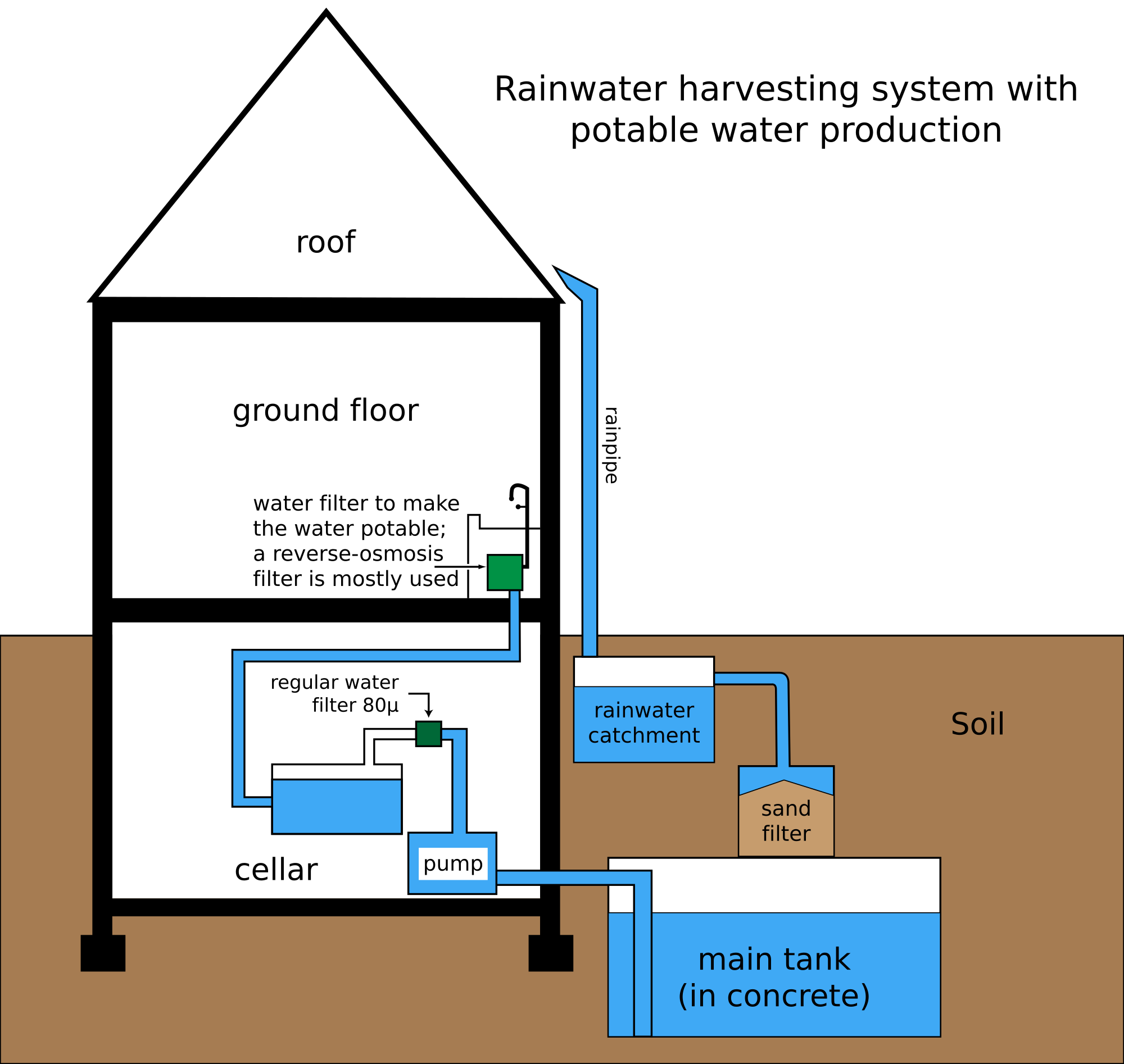
Welcome to the sustainable housing series with Basmati.com! Each week, I’ll write an article that talks about structures that promote sustainable living. I’ll cover everything from construction to average price. This week, I'll be exploring Earthships.
Week 1: Earthships
So, what is an Earthship? An Earthship is a structure made from natural and recycled materials. Much of the construction is then covered by surrounding earth, like soil (and even plants, if you’d like to add them!). Earthships are designed to not only employ ecofriendly materials in the construction, but they also are designed to require minimal resources for heating, water, insulation, and thermal regulation (more on this below). It is for these reasons why Earthships are a staple for off-the-grid living. The philosophy behind Earthships advocates minimum disturbance to the environment. Instead, the structure must align with the surrounding environment and not require high energy extraction methods.
Earthships are made from recycled materials like glass bottles, old tires, and recycled cans. However, building an Earthship can be an incredibly creative experience as well, so there is no limit to the recycled goods that can be used for construction. The walls of an Earthship are traditionally made with recycled tires packed with dirt, called ‘rammed tires’. One tire can weigh up to 300 pounds! The dirt is shoveled onto each tire and then packed in with a sledgehammer. The loadbearing walls are then topped off with either wooden beams or recycled can and cement beams for extra sturdiness. Nonloadbearing walls are usually constructed in a ‘honeycomb’ manner with bottles or cans and cement or adobe.

Source: Flickr

Source: Youtube
But Earthships are more than recycling powerhouses; they are incredibly self sufficient as well, and require the use of much less of resources like power, heat, and even water. The front of the Earthship is typically dressed with windows and solar panels that absorb and regulate the sun’s rays in two ways: first, the solar panels absorb the sunlight and store the energy for sustainable heating used later. Second, Earthships are passive solar structures, meaning the inherent thermal regulation of concrete and tire combination deflects the sun in the summer and absorbs it in the winter, even without solar panels. Earthships are also built in a particular orientation: the windows/above earth panels are built facing the south (often with a small overhang) which ensures the sun’s rotation doesn’t beat into the windows of the Earthship during the summer (when the sun’s rotation is higher). Conversely, in the winter when the sun’s rotation is lower, the southern-exposed windows are able to collect the warmth. The density of the concrete and tires (or supplies with ‘thermal mass’) absorbs extremely hot and cool air/elements, so the Earthship remains fairly temperate all year round. Other materials with thermal mass include very dense materials, like water, stone, adobe, and even tile.
Source: Wikimedia
Another sustainable feature of Earthships is the built in water collection system – the roof employs a catchwater system that collects water from snow and rain. The water is then directed into a mechanism that separates silts and other debris from the water, and then stores the water in a cistern (usually protected in an underground structure). The cistern then sends the water to the Water Organizing Module (WOM). This process usually takes place gravitationally to minimize energy usage. WOM’s contain a pump and filter to give you adequate water pressure for dishes and bathing. After the water is used (and sometimes even reused through a botanical purification process), the water is stored in a greywater system for toilet flushing. Interested in learning more about greywater systems? Stay tuned for an article detailing the ins-and-outs of all things greywater next week!

Earthships are also much more affordable than their traditional wooden housing counterparts in the long run. While traditional housing structures can cost anywhere from $55-$328 per square foot, the average usually hovers around $112. Earthships vary significantly, too, especially depending on whether you build one yourself or have one constructed for you. Earthships can be beautifully done for as little as $18 per square foot (and a lot of sweat hours!) or you can have one built for you for about $225 per square foot. However, it’s also worth taking into account the money you will save long term for heating, cooling, and even water.
There is also astounding sociopolitical, economic, and ecosystemic value to Earthships. Often, as little as two people can construct these structures, and construction requires no use of advanced or expensive technology or tools. Further, materials are highly accessible as the key ingredients for an Earthship are products we normally consider waste (the waste we are running out of room to store!) Thus, these structures can be used in countries that do not have the materials or economic resources to construct traditional housing, but are in need of more efficient temperature regulation.
Earthships also free up landfills, which create their own slew of environmental degradation. Earthships not only use these materials, but encourage a lifestyle based on sustainability and recycling – notions that continue to be integrated into many of the green movements of the last decade. What’s more, Earthships not only recycle materials for their construction, but require less energy to sustain themselves (through solar panels and heat regulation).
Earthships can be a great option for people who are interested in living more sustainably, but don’t want to give up modern conveniences like indoor plumbing and lighting. Do you live in a sustainable housing unit? Share your story!
Stay tuned for next week’s article with the Sustainable Housing Series.








